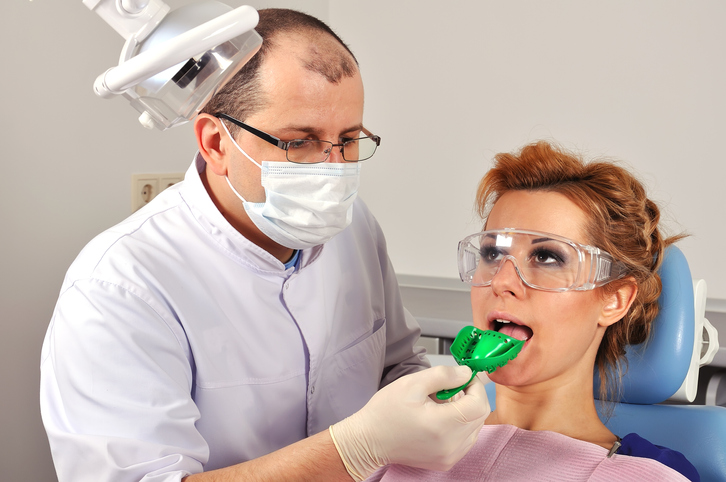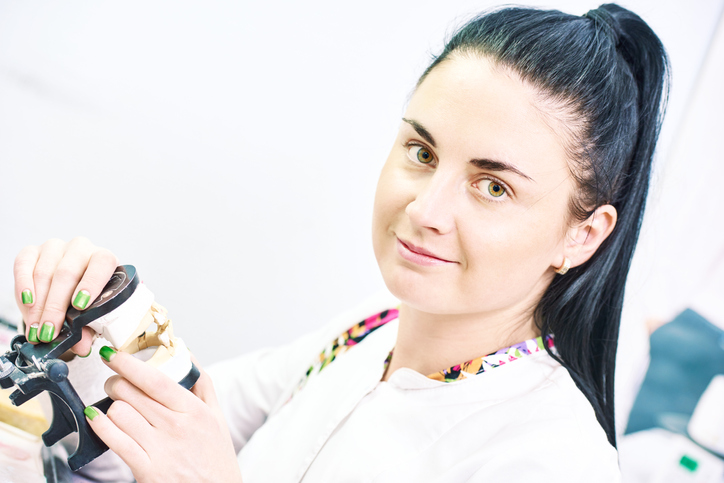
People need dentures for a variety of reasons. Some have lost teeth due to decay over time, while others may have suffered injuries through sports or other activities. Gum disease is another common reason for tooth loss, unfortunately affecting 7 out of 10 Canadians in their lifetimes. Whatever the cause, helping patients with their dentures gives back their ability to chew, speak, and smile confidently.
If you’re interested in a denturist career, you might wonder what the process is like for creating dentures – is each tooth formed separately? How many steps are involved? How will you make dentures look natural? Read on for the answers to these questions and more.
First (Dental) Impressions are Everything in a Denturist Career
The first step of creating dentures is making a dental impression. These are made using a liquid material, usually alginate, poured into a tray that is shaped in a curve and will easily fit into a mouth. This liquid will harden into a rubber-like material over a short period of time. The tray is then removed and the impression can be used to create stone dental casts, replicating the patient’s gum, tooth and/or jaw shape and providing a frame to build dentures on top of.
 Dental impressions are the first step in making dentures, getting an imprint of a patient’s gums
Dental impressions are the first step in making dentures, getting an imprint of a patient’s gums
Dental impressions are one of the specialized skills that will appear in a denturist course, invented in the early 1800s, with beeswax used as the first material. Nowadays, alginate is most common and you will encounter it most often. It’s extracted from seaweed for its ability to create an irreversible molded gel, as well as its low cost and accuracy.
Dental Articulators Will Show up a Lot in a Denturist Career
Once the stone casts have been created from the impression, they are put on an articulator, which is a mechanical device that mimics a human jaw. The casts form the shape of the patient’s mouth on top of the mechanism, so that the relationship between the mandible, or lower jaw, and the maxilla, or upper jaw, is clear.
 Dental articulators are used to recreate the mechanics of a human jaw
Dental articulators are used to recreate the mechanics of a human jaw
Teeth are bought from a manufacturer and come in sets. They are individually attached to the stone casts with wax, using the movable articulator to properly line up the teeth. The wax is then sculpted and carved to accurately represent real gums, replicating the texture and imperfections of natural tissue. Another way that dentures are often made to look real is by using teeth that don’t have a perfect white colour or straightness. As you’ll surely see in your denturist career, most people have natural imperfections and look better with them.
Injection Molding in the Creation of Dentures
An injection flask holds the wax sculpture encased in plaster, then the wax is boiled, melted, and rinsed away. Acrylic is injected into the flask, filling the spaces left by the wax. Once the plaster is removed, the result is acrylic dentures. These are detached from the plaster thanks to a separating fluid, which prevents sticking.
Next, the dentures are tried on in the patient’s mouth, in case any changes are needed. Denture adjustments and realignments are part of hands-on training that will prepare you for work in the field. Repairs and changes also come up later on with dentures, as shifts, sores, cracks, and irritation can pop up. With your expertise, you’ll be able to help people out with these issues and get them back to leading happy and healthy lives.
Are you interested in denturist training?
Contact Oxford College for more information!






